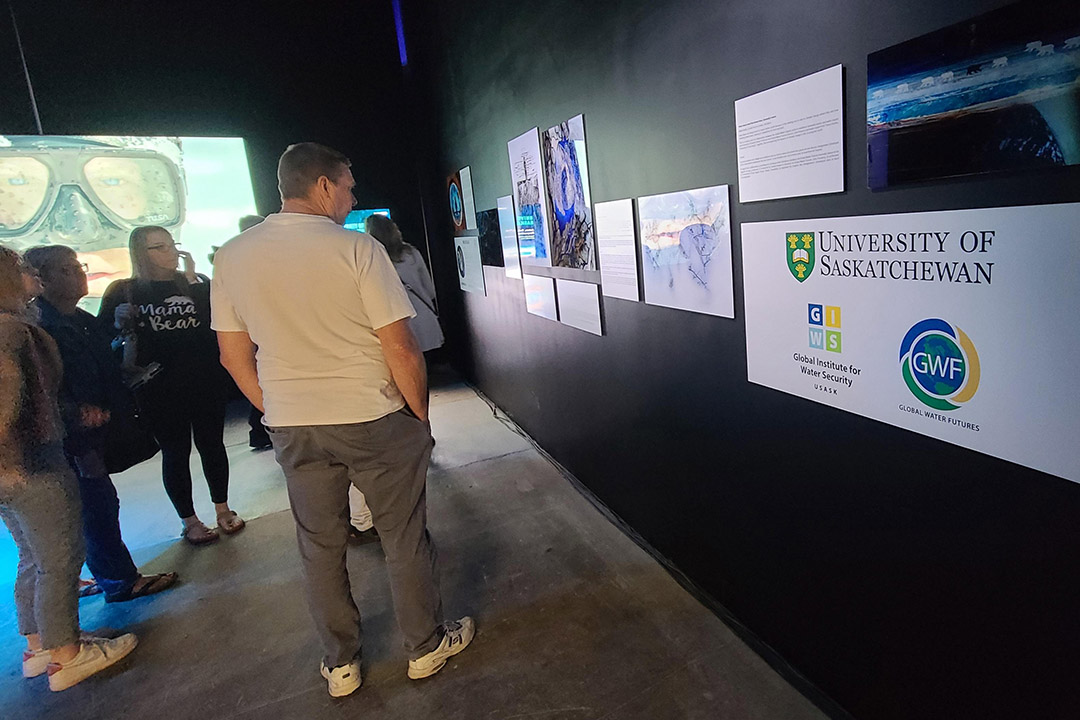
USask proud partners of exhibit Arctic: A Man Under the Ice
Art and science in collaboration on display at international traveling exhibit in downtown Saskatoon.
By University CommunicationsArctic: A Man Under the Ice, is making its way across North America, but its first stop is in Saskatoon.
Featuring the film and photography of explorer Mario Cyr, the exhibit invites adventurers of all ages to explore the world of the Canadian Arctic.
The curators of the exhibit approached the Global Institute of Water Security and the University of Saskatchewan (USask) to partner on the display, since the message is all about the changing landscapes of the Arctic due to climate change.
“The climate crisis is the water crisis, and Canada is warming at two to three times the global anticipated rate and parts of Canada’s Arctic, up to five times,” said Dr. Corinne Schuster-Wallace (PhD), associate professor in the Department of Geography and Planning at USask and associate director of Global Water Futures, at the recent launch of the showcase.
“As we saw in 2021, floods, droughts, wildfires, coast to coast to coast. We’ve seen the effects of too much and too little water on lives and on the very economic fabric of Canada’s economy.”
The university is providing six unique pieces that capture the collaboration of artists, scientists and Indigenous perspectives on water and climate change. This original artwork is part of the Virtual Water Gallery, which is housed at the USask Coldwater Laboratory in Canmore, Alta.
Arctic: A Man Under the Ice runs until May 29. For more information and to visit the exhibit, go to: http://www.arctic-undertheice.com/
For more information on the Virtual Water Gallery, go to: https://www.virtualwatergallery.ca/
The art on display:
Water is Life, Patrick Cheechoo and Rebeka Ryvola
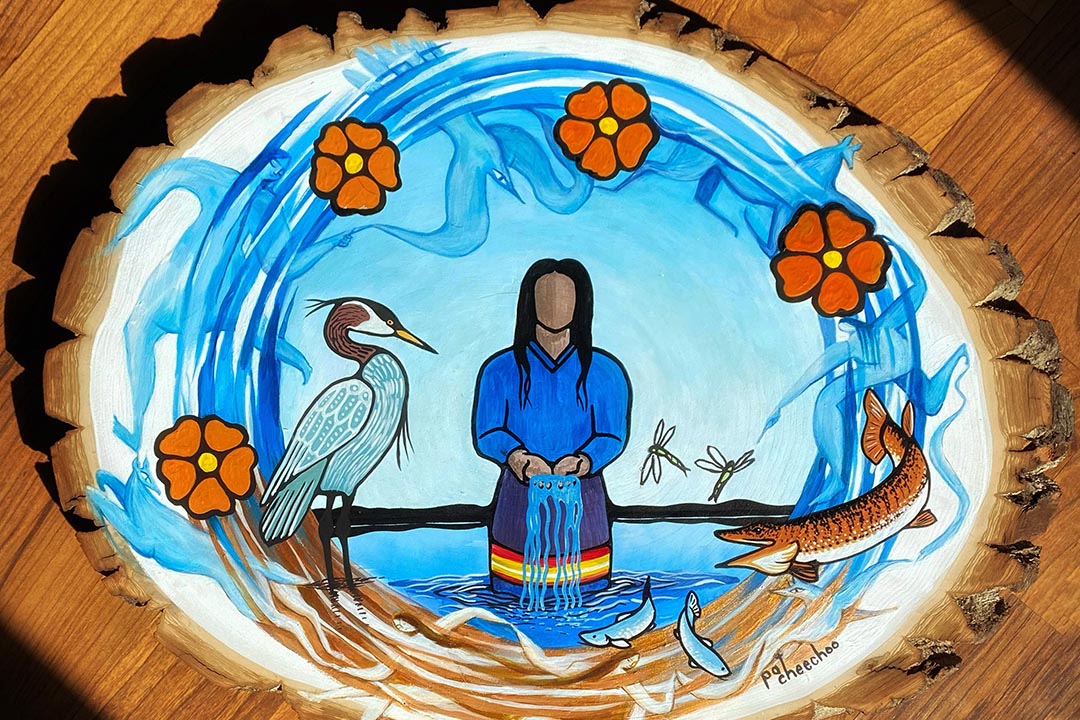
The First Nations Woman at the core of the piece is a Water Warrior who is dedicated to water protection and traditional knowledge. Artistic collaboration between Mushkego (Cree) artist Patrick Cheechoo and Rebeka Ryvola, in partnership with the Matawa Water Futures research team, Sarah Cockerton, Laura Prior, and Terry Mitchell.
Permutation, Megan Leung
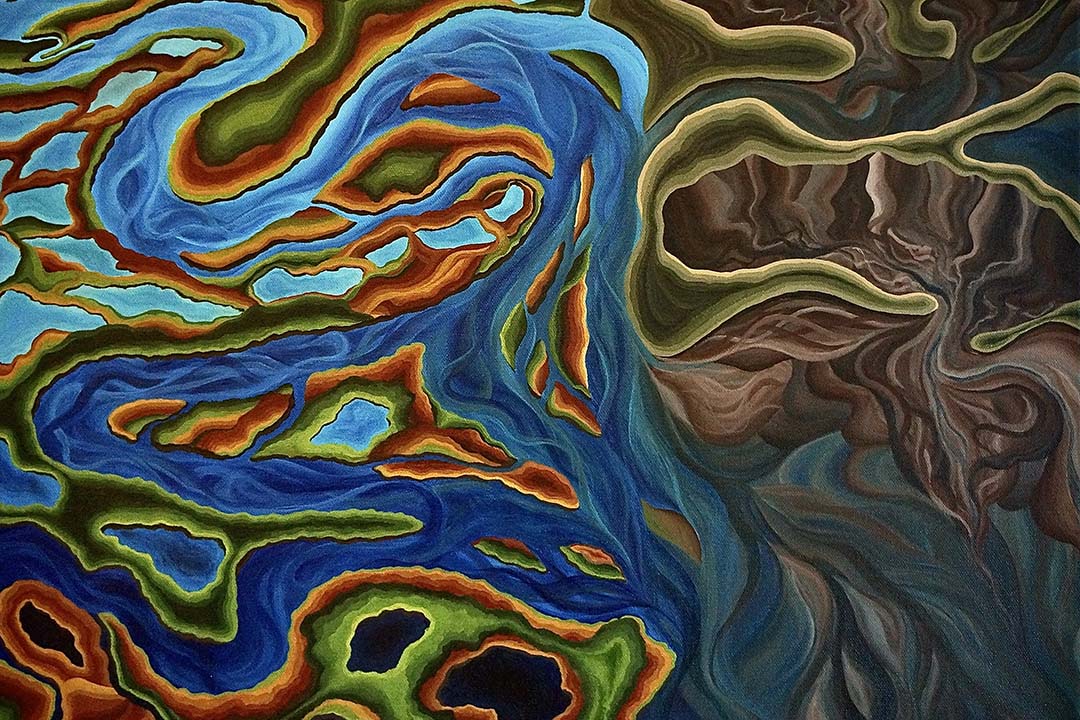
I see northern landscapes as a beautiful paradox of power and fragility. I am deeply moved by how striking aerial photography and satellite imagery have always been. This science and art collaborative installation between artist and scientist Megan Leung and water expert Aaron Berg focuses on how changes to water security in the Canadian Arctic connect and play at different scales, seasons, and spaces.
Drunken Trees, Rhian Brynjolson
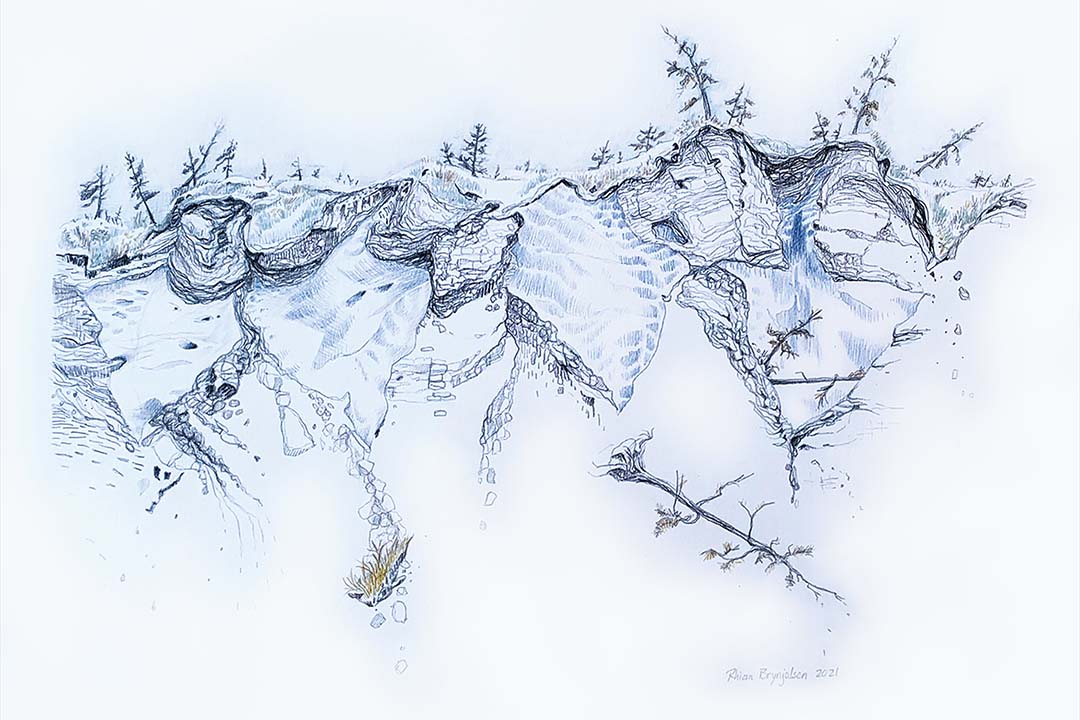
This science and art collaboration between artist Rhian Brynjolson and water expert Jennifer Baltzer focuses on the idea of life support, making connections between self-preservation and the health of global systems, with a focus on subarctic regions, on the effects of permafrost thaw, in particular abrupt thaw events, and the resulting changes, structure and function of subarctic ecosystems.
Connections, Louise Arnal

This piece is part of a book entitled Deep Time, offering a science and art exploration of groundwater and the related environmental challenges. This book was created by artist and water expert Louise Arnal, in conversation with groundwater experts Grant Ferguson and Jennifer McIntosh.
Heartland, Greg Hargarten
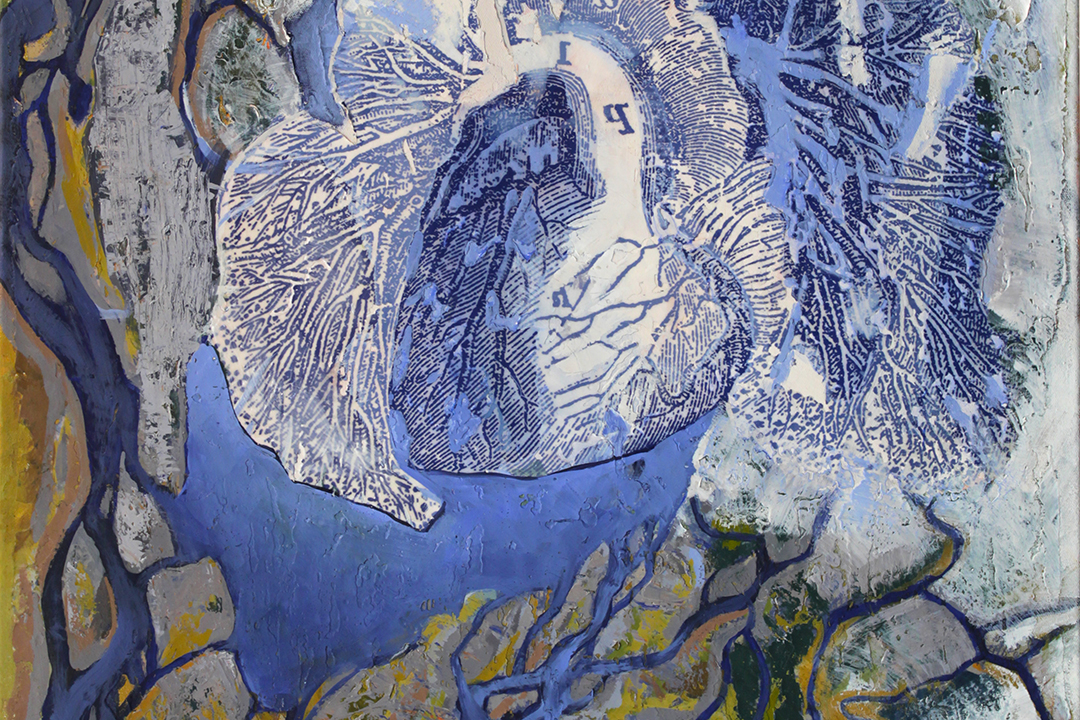
Fresh water is the lifeblood of everything on the planet—without it there is no life. Glaciers hold close to 70 percent of the earth’s freshwater; they are sensitive indicators of climate change and the general health of the global water supply. This piece is part of a project entitled Head to Heart: Water as our Lifeblood, in conversation with Global Water Futures scientists.
Polar bears meet the brown bear, Gennadiy Ivanov
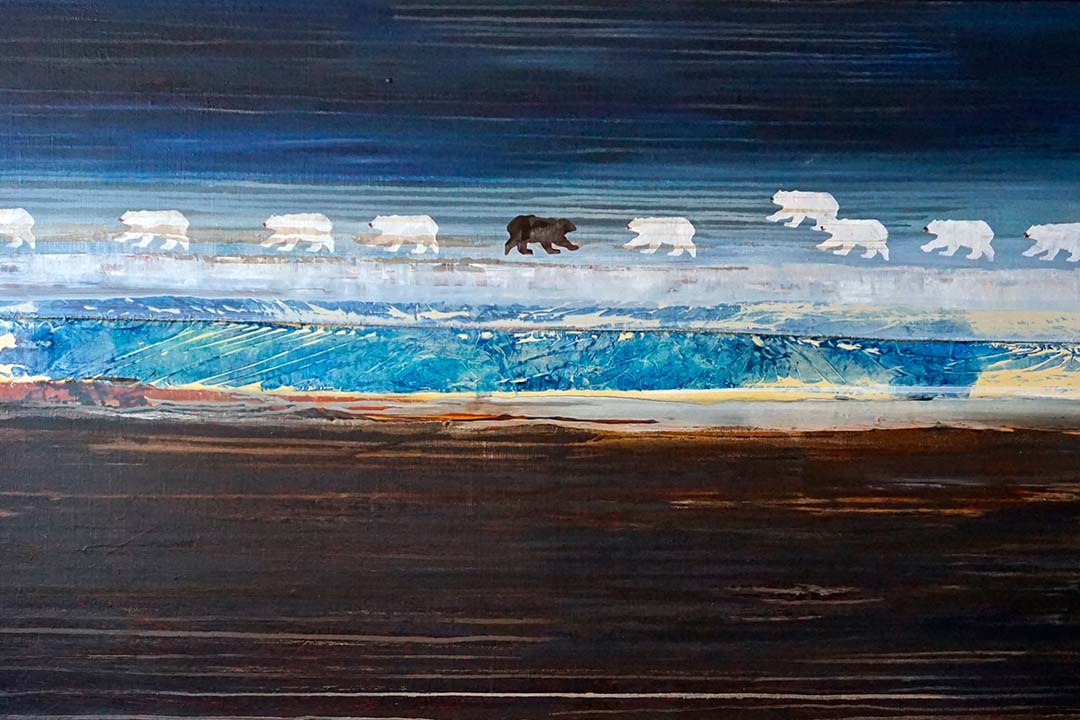
Polar Bears are being forced to move further south because of the melting sea ice due to climate change where they are now meeting brown bears, leading to competition for food and land. This is a science and art collaboration between Global Water Futures artist-in-residence Gennadiy Ivanov and water expert and USask professor and Global Water Futures Director John Pomeroy and water expert Professor Trevor Davies of the University of East Anglia. Together, they are exploring the impacts of climate change in the circumpolar north.
Article re-posted on .
View original article.
